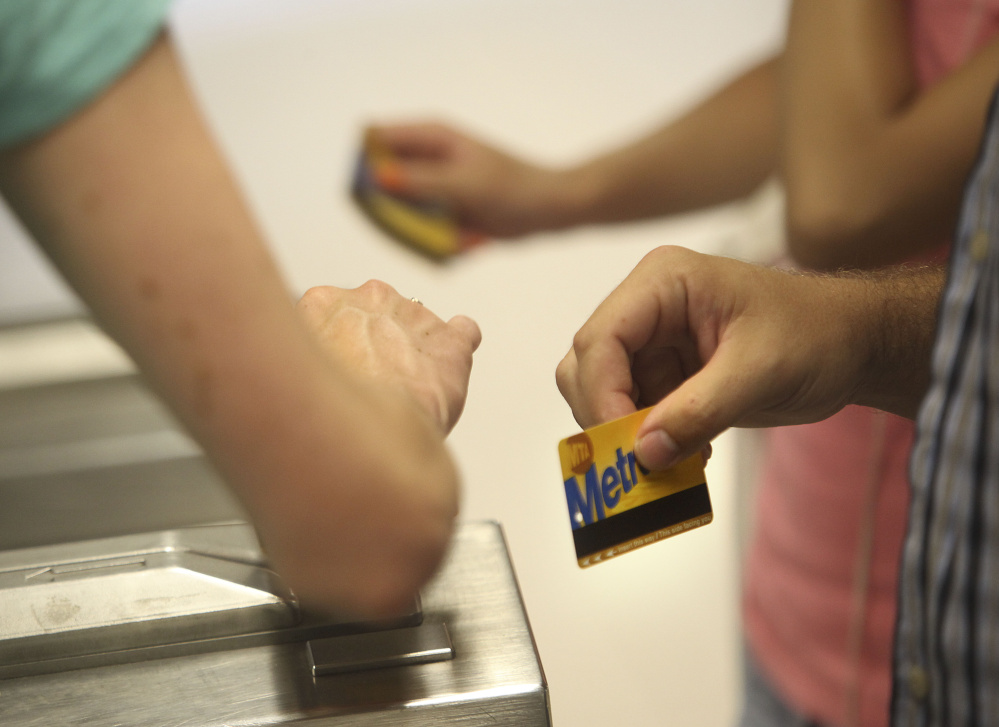What microbes are lurking in the Boston subway system? A team of scientists armed with sterile cotton swabs and a bit of soap rode the Red, Orange and Green lines of the T to find out.
What they discovered surprised them.
It turns out that the slick metal poles and well-worn hand grips used by hundreds of thousands of riders each day are not hotbeds of pathogenic bugs as the researchers originally suspected.
Instead, they say the microbes on most of the sampled surfaces – including subway seats, touch screens and the walls of indoor and outdoor ticketing machines – look a lot like what you’d find on healthy human skin.
“From what we found, the bugs you encounter riding the T is not any worse than what you would expect from shaking someone’s hand,” said Curtis Huttenhower, a computational biologist at Harvard T.H. Chan School of Public Health in Boston. “Sure, a lot of microbes are involved, but it’s nothing to worry about.”
Huttenhower is the senior author of a paper published Tuesday in mSystems, the American Society for Microbiology’s journal, that describes the findings.
His group also detected a smattering of microbes that usually live in our mouths on the poles and hand grips (about sneeze and cough level), as well as some vaginal microbes on the seats. The authors said genital-related microbes can be transferred through clothing.
The researchers weren’t specifically looking for the types of bugs that make us sick, but they did check for obvious pathogens.
“Our conclusion is that even though the subway can seem like a ‘dirty’ environment, it’s not strikingly different from a conference room at work,” Huttenhower said.
The study is part of an effort financed by the Alfred P. Sloan Foundation to better understand what microbes are living in built environments like malls, office buildings, transit systems and even our homes.
The microbes in, on and around us have evolved to live in natural environments such as in soil, on plants and in our guts, mouths and skin. But what happens when those microscopic bugs land on an electronic touch screen or a vinyl subway seat or a piece of drywall?
Do they live? Or die? Do they eat? Do they multiply?
“That is still a big open question,” Huttenhower said. “And it is a difficult thing to measure.”
So far, there have been only two other studies that looked at microbial communities in subway systems – one in New York, the other in Tokyo.
The authors of the New York study reported the presence of scary-sounding pathogens in the subways, but those findings were later revised.
In the future, it is possible that researchers could keep tabs on the microbial composition of subway surfaces and use it as a way to tell whether flu symptoms are on the rise, Huttenhower said.
Copy the Story LinkSend questions/comments to the editors.




Success. Please wait for the page to reload. If the page does not reload within 5 seconds, please refresh the page.
Enter your email and password to access comments.
Hi, to comment on stories you must . This profile is in addition to your subscription and website login.
Already have a commenting profile? .
Invalid username/password.
Please check your email to confirm and complete your registration.
Only subscribers are eligible to post comments. Please subscribe or login first for digital access. Here’s why.
Use the form below to reset your password. When you've submitted your account email, we will send an email with a reset code.